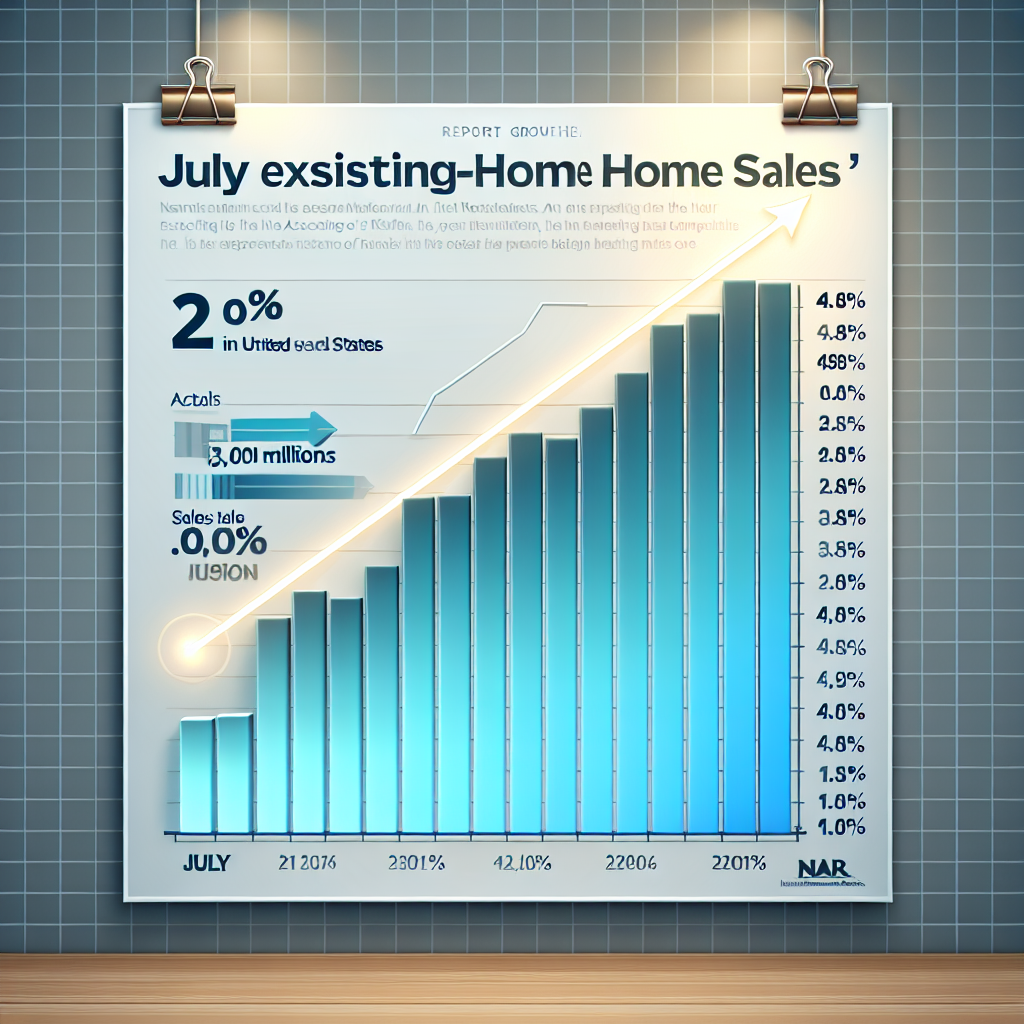On Thursday, August 21, the National Association of Realtors (NAR) in the United States released its July Existing-Home Sales Report, indicating a 2% growth in July’s existing home sales compared to the previous quarter, reaching 4.01 million units. The actual sales were 0.8% higher than in July of the previous year. Prior to this, real estate analysts had predicted a slight decline in sales volume.
These sales data are calculated based on the number of transactions completed, so signings may have occurred in May or June when the average interest rate for 30-year fixed-rate mortgages was decreasing. According to the Mortgage News Daily, this rate briefly exceeded 7% in May but dropped to 6.67% by the end of June.
Freddie Mac reported that the average interest rate for 30-year fixed-rate mortgages in July was 6.72%, lower than June’s 6.82% and the 6.85% from a year ago.
The report showed that by the end of July, there were 1.55 million homes for sale across the U.S., which was a 15.7% increase compared to the same period last year. At the current sales pace, this represents a 4.6-month supply of inventory. Normally, a 6-month supply is considered a balanced market for both buyers and sellers.
Currently, inventory is at its highest level since May 2020, but significantly lower than before the COVID-19 pandemic’s impact.
The increase in inventory has evidently eased price pressures. The median sales price for existing homes in July was $422,400, a 0.2% increase from the same period last year, setting a new historical high for July.
NAR’s Chief Economist Lawrence Yun stated, “Slight improvements in housing affordability are driving the modest growth in home sales. Wage growth has outpaced price growth, giving homebuyers more options.”
Yun pointed out that apartment sales in the Southern region have increased, while home prices there have been declining over the past year.
“The near-zero price growth indicates that roughly half of the country is experiencing price decreases. Overall, homeowners’ financial conditions are strong. Only 2% of sales are distressed or short sales, nearly at historically low levels. From July 2019 before the COVID outbreak to July this year, the average home price for a typical homeowner in the U.S. has increased by 49%, supporting a healthy market,” Dr. Yun said.
He also noted, “Buyers are in the most advantageous position in over five years, able to find suitable homes and negotiate better prices. The current inventory level is at its highest since the lockdown in May 2020.”
Sales activity in the market continues to be most active in the high-end segment. Sales of homes priced over $1 million increased by 7.1% year-on-year, while sales of homes priced between $100,000 and $250,000 decreased by 0.1%. Sales of homes priced below $100,000 dropped by 8%.
The report indicated that homes are taking longer to sell now. The average time for homes to sell in July was 28 days, up from 24 days in the same period last year. First-time homebuyers also slightly decreased, accounting for 28% of sales, lower than 30% in June and 29% in July 2024.
Investors accounted for 20% of all sales, higher than the 13% in July 2024.
Due to relatively higher mortgage rates, the proportion of all-cash buyers increased from 27% last year to 31% this year.
“This percentage is exceptionally high,” Yun noted, suggesting that stock market wealth or real estate wealth could be contributing factors.
(This article referenced reporting from CNBC)

